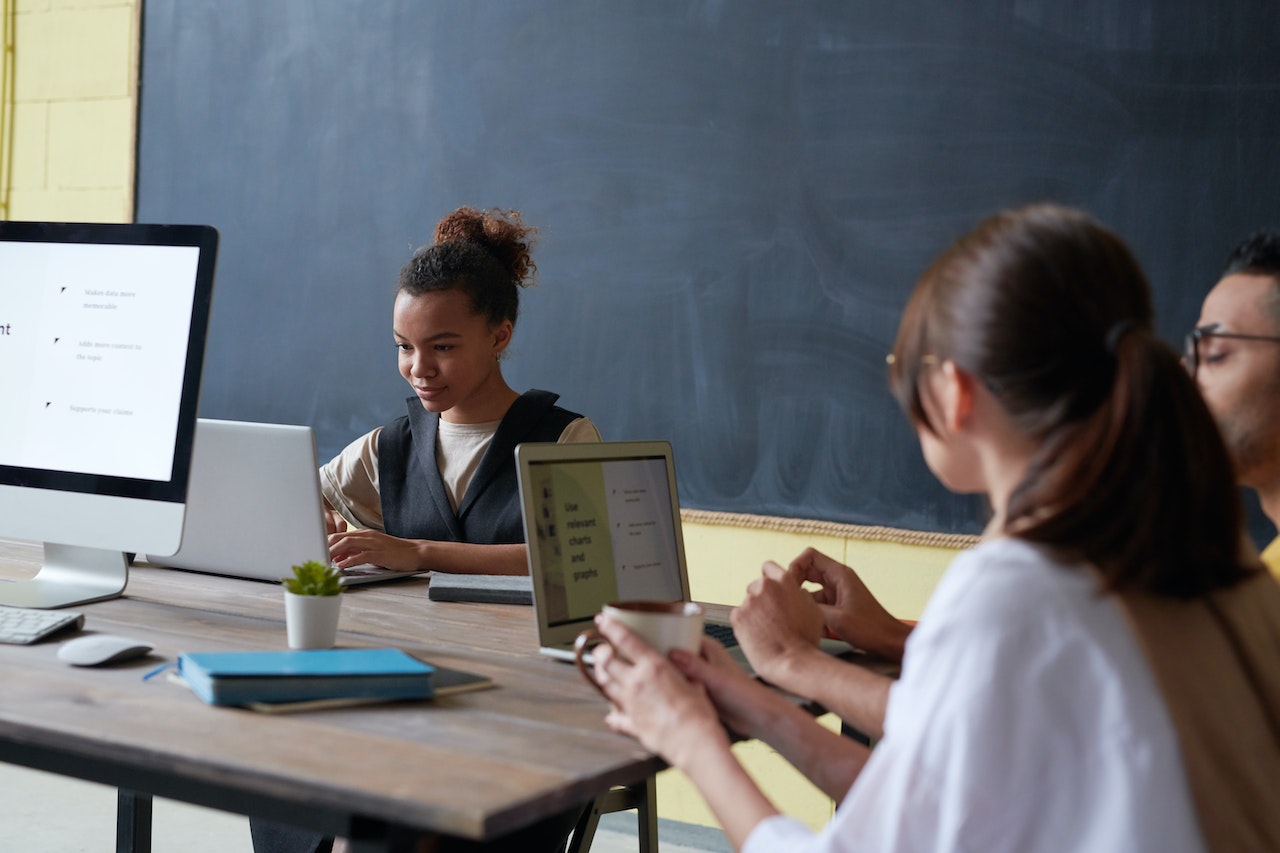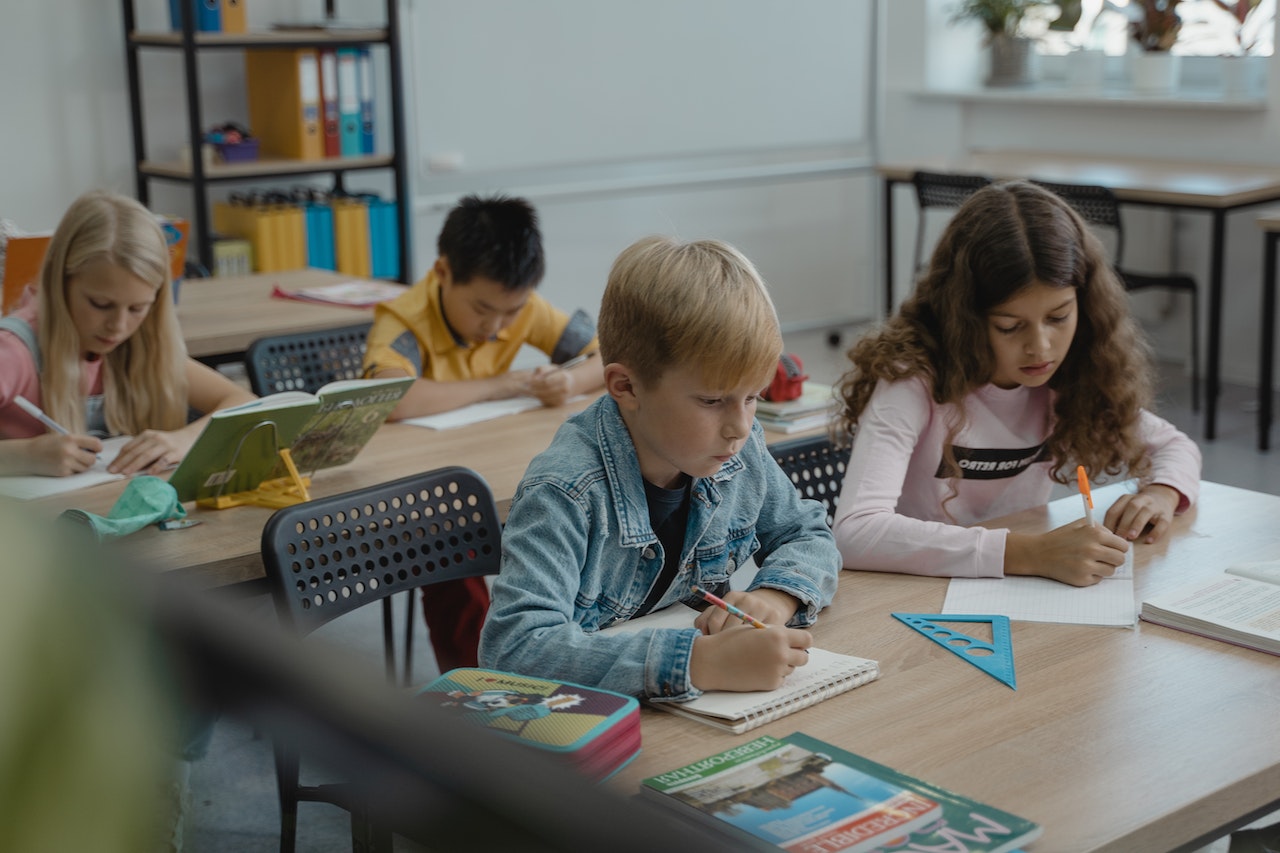How Does School Furniture Affect Learning?

In the world of education, every thread plays its part, from teaching methodologies to curriculum design.
Yet, one element that often goes unnoticed, but has a profound impact, is school furniture.
At first glance, chairs, tables, and desks might seem mundane, but their design and placement can profoundly influence a student's concentration, comfort, and even long-term health.
As we look into this often-overlooked aspect of education, you might find yourself reevaluating the silent role that furniture plays in the learning experience.
Join us as we explore the fascinating intersection of ergonomics, design, and the world of education.
Click here to visit our school furniture suppliers page.
How Does Furniture Affect Learning in Schools?
School furniture, while seemingly just a backdrop to the educational process, has a surprisingly profound impact on learning outcomes, student health, and classroom dynamics.
Here is how:
1. Ergonomics & Physical Health:
- Posture: Ill-designed furniture can lead to poor posture, causing back and neck pains in students, which can divert their attention from learning.
- Comfort: Comfortable students are less likely to get distracted and more likely to focus on lessons. The opposite is true for students sitting on uncomfortable chairs or using desks that are too high or too low.
2. Enhanced Engagement:
- Flexible Furniture: Furniture that can be easily rearranged promotes group activities, discussions, and collaborative learning. This flexibility can make lessons more engaging and interactive.
- Individualised Spaces: Adjustable furniture that can be tailored to fit individual students can make them feel more valued and catered to, thus promoting engagement.
3. Classroom Dynamics & Behaviour:
- Spatial Arrangement: The layout of desks and chairs can influence student interactions. For instance, circles or U-shapes promote discussions, while traditional rows might be more suitable for lectures or individual work.
- Behavioural Impact: Uncomfortable or restrictive furniture can lead to restlessness, fidgeting, and disruptive behaviours.
4. Inclusivity:
- Special Needs: Furniture designed with inclusivity in mind ensures that all students, including those with physical disabilities, are accommodated, ensuring an equitable learning environment.
5. Cognitive Development:
- Age-appropriate Furniture: Furniture designed for specific age groups can cater to their developmental needs. For younger kids, furniture that allows movement can be beneficial as it caters to their kinesthetic learning tendencies.
- Neurological Impact: The brain's functioning can be impacted by physical discomfort. Students in pain or discomfort might face difficulties in processing information or retaining knowledge.
6. Safety & Durability:
- Sturdy Furniture: Furniture that's durable and doesn't wobble or have sharp edges ensures student safety. Accidents caused by substandard furniture can lead to injuries and disrupt learning.
- Material Choices: Furniture made from non-toxic materials ensures that students aren't exposed to harmful chemicals.
7. Environmental Considerations:
- Sustainability: Eco-friendly furniture not only reduces the environmental footprint but also serves as a teaching tool about sustainability practices.
- Classroom Aesthetics: A well-designed classroom with aesthetically pleasing furniture can create a more conducive learning environment, uplifting students' moods and increasing their willingness to learn.
8. Storage & Organization:
- Organized Spaces: Desks with storage options or classrooms with dedicated spaces for personal items can reduce clutter and distractions, promoting a focused learning environment.
So, while furniture might seem like a mere utility, its ergonomics, design, layout, and quality have far-reaching implications on learning outcomes.
Investing in well-designed school furniture is, in essence, investing in the optimal development and well-being of students.

Why Are Ergonomics Important in the Classroom?
Ergonomics, the study of designing environments and products to align with human physiology and psychology, plays a pivotal role in the classroom setting.
Here is why ergonomics is crucial for learning environments:
1. Enhanced Concentration:
Proper ergonomics ensure that students are comfortable.
When students are not distracted by discomfort, they can focus better on the lesson at hand, leading to better comprehension and retention.
2. Physical Health:
Ill-fitting furniture can lead to musculoskeletal problems. Over time, students may develop chronic issues like back pain, neck pain, or even carpal tunnel syndrome.
Ergonomic furniture supports natural posture, reducing the risk of such ailments.
3. Boosted Engagement:
Ergonomic furniture often allows for flexibility in classroom setups.
This adaptability can support various teaching methods, from group discussions to individual tasks, accommodating diverse learning styles and enhancing student engagement.
4. Reduced Fatigue:
Sitting in an uncomfortable position for extended periods can lead to fatigue.
Ergonomic seating and desks allow students to maintain a comfortable position, reducing tiredness and increasing their alertness and participation.
5. Inclusivity:
Every student is unique, with different body types and needs.
Ergonomic classroom design can cater to a wider range of students, including those with physical disabilities, ensuring that all learners have an equitable educational experience.
6. Safety:
Ergonomically designed classroom furniture tends to be safer. It often avoids sharp edges, has improved balance, and is made with non-toxic materials, minimizing risks of accidents or health hazards.
7. Long-Term Benefits:
Instilling the importance of ergonomics from a young age can have lasting impacts.
Students become more aware of their posture and physical well-being, which can lead to healthier habits in adulthood.
8. Enhanced Academic Performance:
When the physical needs of students are met, and distractions are minimized, students can perform at their best.
The combination of comfort, health, and focus can lead to improved academic outcomes.
9. Psychological Well-being:
A classroom that prioritizes ergonomics shows students that their well-being is valued.
This can boost self-esteem and create a positive association with learning.
10. Cost-Effectiveness:
While ergonomic furniture might have a higher upfront cost, its durability and the potential to reduce health-related issues can lead to cost savings in the long run.
In essence, ergonomics in the classroom is not just about furniture design—it's about crafting an environment that maximizes learning potential, safeguards student health, and fosters a positive attitude towards education.
Investing in ergonomics is an investment in the future of students.
How School Furniture Can Facilitate Collaborative Learning
Collaborative learning, an educational approach where students work together to solve problems or achieve a common goal, is gaining traction in contemporary educational settings.
The physical environment, including school furniture, can either enhance or hinder collaborative efforts.
Here's how school furniture can be designed or arranged to promote collaborative learning:
1. Modular Desks and Chairs:
Furniture that can be easily moved and reconfigured allows for quick transitions between individual work and group activities.
Modular furniture offers flexibility, accommodating diverse group sizes and tasks.
2. Circular and Half-Circular Tables:
Round tables ensure that all students face each other, facilitating communication and eye contact, essential for group discussions and collaborative tasks.
3. Writable Surfaces:
Desks or tables with writable surfaces allow students to jot down ideas, draw diagrams, or solve problems collaboratively.
This interactive feature encourages brainstorming and sharing of ideas.
4. Comfortable Seating:
Comfortable chairs encourage prolonged group activities without physical strain.
Ergonomic chairs that can swivel also enable students to turn and engage with peers on either side without repositioning the entire chair.
5. Shared Digital Interfaces:
Tables equipped with built-in screens or interactive displays allow groups to work on digital projects together, share resources, or brainstorm using digital tools.
6. Nesting Furniture:
Furniture that nests or stacks can be stored easily, freeing up space when the entire class needs to come together for a collaborative activity or discussion.
7. Breakout Zones:
Dedicated spaces furnished with soft seating, like couches or bean bags, create informal environments ideal for group discussions, brainstorming, or project work.
8. Mobile Storage Solutions:
Carts or mobile storage units allow students to keep their materials organized and accessible.
This ensures that even when they move to collaborate, their resources move with them.
9. Partition Screens:
Lightweight, mobile screens can be used to divide a classroom into smaller collaborative zones or provide a backdrop for presentations within a group.
10. Acoustic Furniture:
In an environment where multiple groups may be discussing simultaneously, furniture with acoustic properties (like high-backed sofas or partition screens) can help dampen noise, ensuring that each group can converse without excessive background noise.
11. Integrated Power Supplies:
Tables or seating with built-in power outlets or USB ports ensure that students can use devices without worrying about battery life, making it easier for groups to integrate technology into their collaborative efforts.
12. Visual Accessibility:
Low-profile furniture or tiered seating arrangements ensure that visual aids, such as whiteboards or screens, are visible to all students, even when seated in groups.
13. Shared Supply Centers:
Central hubs stocked with supplies like markers, paper, or building materials facilitate group projects, ensuring that materials are within everyone's reach.
So, the right school furniture can do much more than provide a place to sit and write.
It can catalyze collaboration, break down barriers, and foster a community of learners who actively engage with each other.
Schools that recognize and harness the potential of their physical environments stand to enhance the learning experiences of their students significantly.

Why Quality Matters When it Comes Furniture for Schools
In the educational realm, every component contributes to the broader learning experience, and furniture is no exception.
The quality of school furniture directly impacts not just the physical well-being of students but also their cognitive and emotional engagement.
High-quality furniture, designed with ergonomics in mind, ensures that students remain comfortable throughout the day, minimizing physical strains or distractions.
This, in turn, can bolster their concentration and facilitate deeper immersion in lessons.
Moreover, quality furniture stands the test of time, proving to be a cost-effective investment in the long run.
It can withstand the daily wear and tear of bustling school environments, reducing the need for frequent replacements or repairs.
In addition, well-crafted furniture often integrates features tailored for modern education, such as adaptability for collaborative learning or provisions for technological integration.
Also, the visual appeal of quality furniture enhances the overall ambiance of learning spaces.
Aesthetically pleasing environments can elevate students' moods, motivation, and even their respect for the surroundings.
In essence, investing in quality when it comes to school furniture is a strategic move that transcends mere functionality. I
t's about shaping a conducive, resilient, and inspiring environment where education thrives.
Final Notes On How School Furniture Affects Learning
School furniture, often perceived as a passive element in the educational landscape, emerges as a pivotal player when we analyze its multifaceted role in shaping learning experiences.
It is the silent supporter of a student's physical health, the facilitator of dynamic classroom interactions, and the backdrop against which countless ideas and innovations are born.
When we equip our classrooms with furniture that prioritizes ergonomics, inclusivity, and adaptability, we create spaces that truly respect and respond to every student's needs.
This goes beyond mere aesthetics or durability; it touches on the very essence of education - fostering environments where every student feels comfortable, valued, and primed for success.
As educators, administrators, and stakeholders in the future of our youth, it becomes imperative to recognize and invest in this integral aspect of the learning ecosystem.
By prioritizing the right school furniture, we're not just creating classrooms; we're sculpting holistic, nurturing, and empowering spaces for generations to come.


